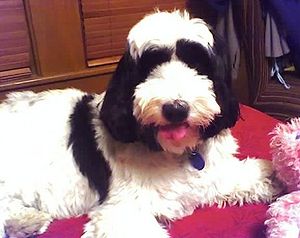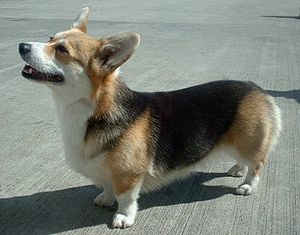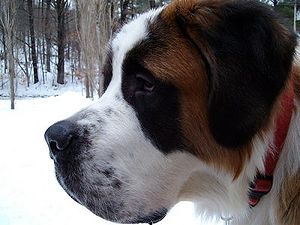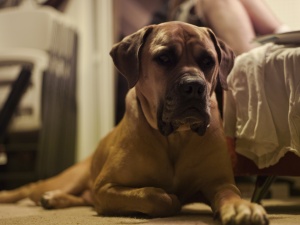 |
| Vital Statistics: |
| Place of Origin: Tibet |
| Group: Terrier |
| Height: 14-17 in. |
| Weight: 18-30 lbs. |
| Life span: 12-15 yrs. |
| Trainability: moderate |
| Good with children: yes, with gentle older children |
| Good with other pets: may show dominance with other dogs |
What is the origin of the Tibetan Terrier?
Legend tells that the Tibetan Terrier was found over 2,00 years ago in the Lost Valley of Tibet. they were raised in monasteries by the lamas and sometimes given as gifts, but never sold. They were considered lucky and sometimes called “Good Luck Dog” or “Luck Bringer.” They were also known as the Holy Dog of Tibet. Tibetan Terriers made their first appearance in the U. S. in 1956. The name is misleading as the Tibetan is not really a terrier, but a herding dog.
What does the Tibetan Terrier look like?
Tibetan Terriers are hardy dogs, 14-17 inches tall, and weighing 18-30 lbs. The body is squarish, Eyes are large with long, heavy eyelashes. Ears are v-shaped and pendant. The feet are large and flat for ease in the snow. the tail is carried over the back. The coat is long, slightly wavy, dense and covers the dog from nose tip to tail tip. The undercoat is short and smooth. Tibetans don’t shed much. Colors are black, white, silver, cream, golden or sable, solid, bi-or tri-colored. The coat should be brushed and combed at least 2 or 3 times a week.
What is the temperament of the Tibetan Terrier?
Tibetans learn quickly and are eager to please. Early patient, positive training and socialization will result in a well-behaved dog. They are highly intelligent and have been known as problem solvers. Tibetans bond closely with their humans. They are very playful and good with older children. They may be reserved with strangers. Tibetans are high jumpers and need a secure area for exercise. They will adapt to aprtment living and to the owner’s lifestyle, but should be walked daily on a leash.
What is the Tibetan Terrier used for?
Originally they were used to herd and retrieve from steep mountain crevices in Tibet. Today, the Tibetan Terrier is a very loving, loyal family companion.
Possible Health Issues
Hip dysplasia, hypothyroidism, progressive retinal atrophy, lens luxation, congenital deafness, neuronal ceriod lipofuscinosis (rare fatty pigment deposits in brain and eye causing illness)
- Airedale Terrier
- American Pit Bull Terrier
- American Stratfordshire Terrier
- Australian Terrier
- Bedlington Terrier
- Black Russian Terrier
- Border Terrier
- Boston Terrier
- Bull Terrier
- Cairn Terrier
- Cesky Terrier
- Dandie Dinmont Terrier
- English Toy Terrier
- Glen of Imaal Terrier
- Irish Terrier
- Jack Russell Terrier
- Lakeland Terrier
- Manchester Terrier
- Miniature Schnauzer
- Moscow Toy Terrier
- Norfolk Terrier and Norwich Terrier
- Old English Terrier
- Scottish Terrier
- Silky Terrier
- Skye Terrier
- Smooth and Wire-haired Fox Terrier
- Soft-coated Wheaten Terrier
- Toy Fox Terrier
- Welsh Terrier
- West Highland White Terrier
- Wire Fox Terrier
- Yorkshire Terrier



